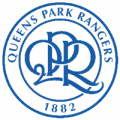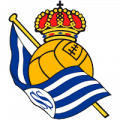
Real Madrid CF

1902 Madrid
Real Madrid Club de Fútbol, commonly known as Real Madrid, is a sporting institution based in Madrid, the Spanish capital. The club's origins date back to March 6, 1902, when it was declared and registered as a soccer club by its members. Similarly, its origins can be traced back to two years earlier, in 1900, and its name, in 1901, as Madrid Foot-Ball. It was founded by Julián Palacios and the Padrós brothers (Juan and Carlos).
Madrid, April 18, 1902, Juan Padrós: "Juan Padrós y Rubio, of Commerce in Madrid, residing at Calle de los Madrazo, 25-3Q izquierda, respectfully submits to Your Excellency's appreciation Exa: That with the aim of setting up a Sports Games Company, which will be called MADRID FOOT BALL CLUB, I enclose the bases by which it will be governed, for your approval."

One of the three teams not relegated
Real Madrid, identified by its distinctive white color, is one of the few professional soccer clubs in Spain whose legal entity is owned by its almost 100,000 members. In the case of the vast majority of Spanish clubs, this is usually done through sports limited companies (S.A.D.). Real Madrid is one of three clubs, along with FC Barcelona and Athletic Club, that have not been relegated and have always remained in the elite of soccer. Among the prizes won in the Spanish First Division by the club founded in 1902 are those of historical leader of the national competition, the most number of matches won and the most number of games played.the most points in a single league and, par excellence, being the club with the most titles in its trophy collection.
Multi-sport character
The creation of the club in 1902 was always exclusively linked to soccer, but it quickly took on a multi-sport character which, years later, proved to be a success. Only the basketball section has survived at Real Madrid Baloncesto, although there was always the idea of creating a rugby or handball section. A few months ago, it was confirmed that Club Deportivo Tacón would be taken over by the Whites, an idea that had been hanging over Chamartín ever since rumors of a women's soccer team began to surface in 2010.
A common feature of the club's basketball and soccer disciplines is that neither has been relegated. In basketball, only Real Madrid Baloncesto, Joventut de Badalona and Movistar Estudiantes have that privilege, which gives them supreme importance on the Spanish basketball scene.
Like the majority of renowned clubs in Europe, Real Madrid is the founder, co-founder and creator of several of Spain's most important competitions, such as the Central Regional Championship or the Spanish Cup, which everyone knows about. Extending the siege to European competitions, Los Blancos have collaborated in the emergence of competitions and associations such as the European Champions Cup, thirteen of which have been held in Spain.European Cup, won thirteen times by Real Madrid, the International Cup and the European Club Association, of which it is a member.
The 20th century, a key period in Real Madrid's history
In terms of sporting achievements, it is one of the most successful, accomplished and recognized entities in the world, both in basketball and soccer. It was awarded by FIFA as the best club of the 20th century in soccer, which demonstrates the importance of Real Madrid. It also received the award for Best European and World Club of the 20th Century, given by the International Federation of Football History and Statistics, better known as the IFFHS. The thirteen European Cup Winners' Cups in soccer and ten in basketball make Real Madrid the club with the most European competitions in both categories.
FIFA Hall of Fame
Thirteen players whose footballing past has been linked to Real Madrid have been inducted into the FIFA Hall of Fame, a project designed to preserve the memory of important figures in the history of soccer. Those elected were: Ferenc Puskás, Alfredo Di Estéfano, Hugo Sánchez, Zinedine Zidane (current Real Madrid coach), Ricardo Zamora, Emilio Butragueño, Vicente del Bosque, Ronaldo Nazário, Luís Figo, Waldir Pereira Didí and Jorge Valdano. In addition, Paco Gente and Santiago Bernabéu were also honored as deans of the project, and the club, as an institution, was also included.

In May 2017, thanks to a survey carried out in Spain by the Asociación para la Investigación de Medios de Comunicación (AIMC), Real Madrid was named the most popular club in Spain. Its international popularity is also high, as it is one of the world's most recognized entities, with more than 450 million followers. Real Madrid is also one of the most valuable sporting institutions on the market, which demonstrates the high revenues that Los Blancos earn every year. Its value is close to 3.8 billion euros and its revenues exceed 700 million euros at the end of the season.
The Real Madrid Foundation
The club also has a foundation, the Real Madrid Foundation, created on September 10, 1997 by the club itself, which is a non-profit organization dedicated to the humanitarian, social and educational work of the club and which dedicates its projects and time to international contributions in favor of development in different countries around the world.
The Foundation of the best team of the 20th century has a project that combines values and sport, two essential aspects for the proper development of people. The values we try to instill are respect, motivation, autonomy, self-improvement, companionship, equality and the creation of healthy habits. All of these characterize Real Madrid 's work in all the areas in which it operates.
Likewise, it develops its project and plans in five main areas, such as sport, sports training for the correct development of the values mentioned, social projects, international cooperation and institutional activities.

Real Madrid 's first years in the National League Championship (1929)
The Liga Nacional Championship, organized by the Royal Spanish Football Federation (RFEF), began in 1929. The national competition quickly acquired the status of "the most important in the country." Real Madrid, who already participated regularly in the Spanish championships, took part in the competition after becoming one of the winners of the Spanish Cup, which was also won by nine other teams.
Defeat against Athletic Club, in a decisive match on the final day, ended Real Madrid 's hopes and led FC Barcelona to the title of the main national soccer competition. After finishing fifth in the second edition of the league, the Whites decided to bolster their ranks with players like Spanish international goalkeeper Ricardo Zamora, for whom Real Madrid made one of the biggest financial payments (150,000 pesetas to Real Club Deportivo Español) in the history of the season.
After the large sums invested, Real Madrid finished sixth in a new edition of La Liga, which led to the departure of some of their players.
Second Spanish Republic
With the establishment of the Second Spanish Republic, Real Madrid lost the royal title granted to it years earlier by Alfonso XIII de Borbón and renamed itself Madrid Foot-Ball Club, also eliminating any symbols or allusions to the monarchical era. Political events were of paramount importance at this time, but Real Madrid did not give up the idea of continuing to expand its institution.As has already been mentioned, in 1929 the basketball section was created, joining the swimming and rugby sections. For the new sections that would increase Real Madrid 's status as the most important club in Spain, the Whites built new sports facilities, the icing on the cake being a gymnasium. Heliodoro Ruiz was fundamental in this process, as he contributed to the development of new sports and athletes.
The basketball section, promoted by Eusebio Millán, became Real Madrid's second most important section, which gave it great popularity. The creation of the white basketball section is named after Ángel Cabrera, the main bastion of the clashes between the white club and Rayo Club de Madrid in the Castilla Championship.
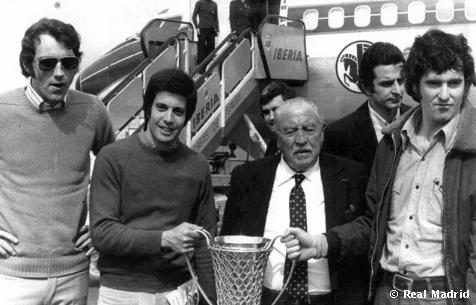
Winning the first league title
Real Madrid won their first league title with a record that only the Whites and Athletic Club can boast. After winning the title and having Manuel Olivares as the competition's top scorer, Real Madrid went on to win two consecutive Cups, beating Valencia Club de Fútbol in 1934 and FC Barcelona in 1936. The latter had a thrilling finish in which a sensational save by Ricardo Zamora saved Real Madrid. After that game, Zamora announced his retirement from soccer.
The serious political situation in Spain continued to affect soccer, which was forced to suspend all activities between 1936 and 1939. Once Francisco Franco's dictatorship was resolved, the club regained its title and the name "Real". At the same time, soccer competitions were resumed and everything returned to normal.
Unfortunately for the Whites, the war left Real Madrid very depleted and with a squad almost devoid of members due to ostracism and the departure of some of its most important players to other teams. This set of misfortunes forced Real Madrid to start from scratch, which meant a huge financial investment. New players arrived, such as Pruden, Corona and Bañón, who proved to be fundamental to the team. In 1943, the rivalry between Real Madrid and Fútbol Club Barcelona was born, after they met in the semi-finals of the Cup. It was there that the biggest defeat in the history of the Clasicos took place, with the Whites winning 11-1 after losing the first leg.

The arrival of Santiago Bernabéu at the club
That same year, in 1943, one of the most important figures in the club's history, Santiago Bernabéu, arrived at Real Madrid. This was the beginning of a period in the club's history in which great things were achieved. In 1946, Valencia and Real Madrid met in the Cup final, with the Whites winning by three goals to nil, giving them another Cup title ten years later. Despite having the worst season in the club's history in 1947 in La Liga, finishing in eleventh place, the club underwent a change for the better with economic measures, especially in the development of new facilities, such as the construction of the new Chamartín Stadium. In addition, the Agrupación Deportiva de Plus Ultra was created, which would be responsible for bringing promising players into the first team.
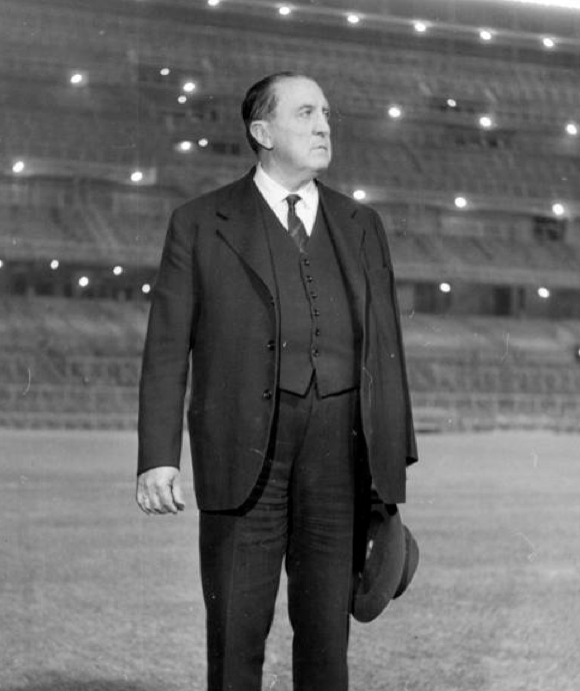
The team that won five European Cups in a row
The 1950s were the club's golden era. 1952 was the club's 50th anniversary, and key figures such as Alfredo Di Stéfano, Paco Gento, Santamaría and, later, Raymond Kopa and Férenc Puskás joined the team. This period became known as "Di Stéfano's Madrid", where they won five Spanish Leagues and five European Cups, the first club in history to do so after its creation in 1956. It also holds the record for winning five European Cups in a row and, later, with the change of format to the UEFA Champions League in 1992, it is also the only club to have won more than two in a row (it has won three in a row). With these players, Real Madrid were unstoppable in the European Cup Winners' Cup and, with the arrival of the 1960s, they went into decline due to the age of their successful players. With the arrival of Miguel Muñoz as coach, a generational change took place.
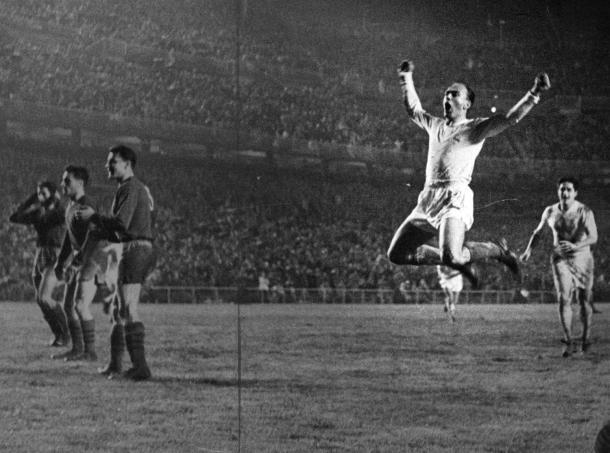
The most successful coach in the club's history
Miguel Muñoz is the coach who has won the most titles with Real Madrid. He spent fifteen years at the club (1959-1974), where he won nine league titles, two European Cups, two Spanish Cups and an Intercontinental Cup. In the 1960s, the club won eight championships, a Spanish Cup and two European Cups. The emblematic players of this era were Pirri, Manuel Sanchís, Zoco, Grosso and Amancio. This was known as the "Madrid of Yé-yé", and Paco Gento is still the player with the most European Cups, with six.

The 70s
The Agrupación Deportiva Plus Ultra gave way to the Castilla Club de Fútbol, and Real Madrid won six league titles, three Copa del Reys and no European Cups, with a drought of more than thirty years in international competitions. In 1977, Juanito arrived in Chamartín and became a madridista idol with the mythical photograph of the Andalusian jumping up and down in celebration of the UEFA Cup comeback against Borussia Mönchengladbach, thus reflecting the madridista sentiment. But undoubtedly the most important event of the decade was the death of the club's president, Santiago Bernabéu, who left a legacy of several decades at the club, not only as president, but also as a player at the club. In 1979, in tribute to the club's former president, a tournament was organized to which Bayern Munich, Ajax and AC Milan were invited. The Santiago Bernabéu Trophy was born.
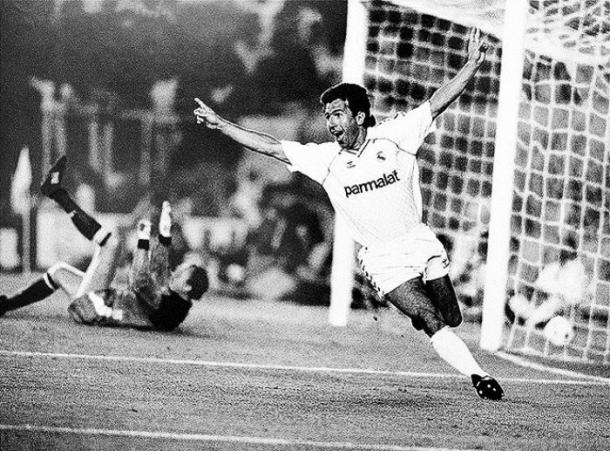
The 1980s and "La Quinta del Buitre".
In 1980, Real Madrid faced their reserve team in the Copa del Rey at the Santiago Bernabéu Stadium, where the first team won by six goals to one. It was a unique event in history, one that has yet to be repeated, and one that gave Castilla the chance to reach European competition. A year later, Real Madrid reached the final of the UEFA Champions League, but lost to Liverpool. He went on to win two UEFA Cups, six LaLiga titles, two Spanish Cups and two Spanish Super Cups. Returning to Castilla, it was here that a number of players developed who would become key players in the first team years later. With them, Castilla even won the second division championship in 1984, but with Real Madrid in the first division they couldn't go up. Alfredo Di Stéfano was the coach who brought in the members of the "Quinta del Buitre", the nickname given to Emilio Butragueño. The other players were Martín Vázquez, Manolo Sanchís, Míchel González and Miguel Pardeza. The club won a Copa del Rey, two consecutive UEFA Cups and five consecutive Leagues.
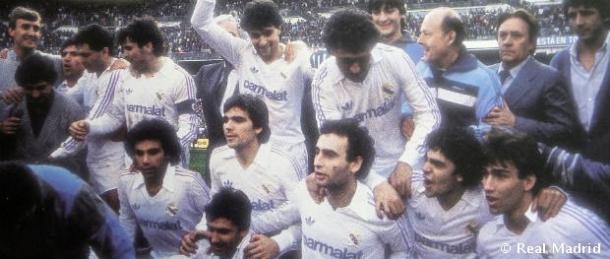
"Illa illa illa, Juanito maravilla".
In 1992 a sad event happened for the white parish. Juan Gómez Juanito was returning from a Real Madrid match against Torino in the UEFA Cup and, after watching the game, he died in a car accident. Since then, the Santiago Bernabéu has been chanting "Illa illa illa, Juanito maravilla" every 7 minutes, in reference to the number he was wearing. His poor form coincided with Johan Cruijff's Barcelona, who won their first European Cup in 1992 with a goal from Koeman's free kick. That same year and the following year, 1992 and 1993, Real Madrid lost the league to Tenerife in the last round of the season, events that became known as the "Tenerife Leagues". In 92' they won the Copa del Rey, which would be their last for twenty years.
The prelude to something great
The second half of the 1990s would be the start of what Real Madrid is experiencing today: the resurgence of the best club of the 20th century, according to FIFA, after promoting players like Raúl González and Iker Casillas. The 1995 team included players like Amavisca, Buyo, Quique Sánchez Flores, Manuel Sanchís, Hierro, Redondo, Laudrup and Iván Zamorano. It was a resurgence for the Whites, who saw a young Raúl González emerge from the youth ranks into the first team when Jorge Valdano, then the club's coach, called him up in 1994 to play against Real Zaragoza, where he became a starter. His first goal for Los Blancos came a week later, in the derby against Atlético de Madrid, where he was also involved in Madrid's other two goals. It was the start of what would become the club's captaincy and emblem. It was also the start of a movement known as "modern soccer", with the arrival of pay-TV, foreign signings with the Bosman Law and the emergence of companies.
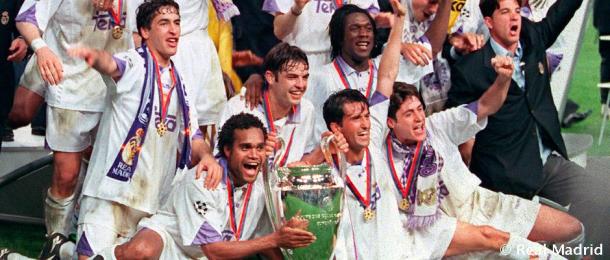
The seventh
A number of players from the youth ranks later made it into the first team and left their mark on the club. This is the case of the aforementioned Raúl González, but also José María Gutiérrez Guti and Iker Casillas, who was instrumental in the club winning its ninth European Cup in 2001. But before that, Real Madrid reached the final of the European Cup Winners' Cup in 1997/1998, against Juventus, with players like Zinedine Zidane, Edgar Davies, Didier Deschamps, Filippo Inzaghi and Alessandro Del Piero. Despite being the clear favorites, Juventus lost for the second time in a row in the final, having lost the previous year to Ottmar Hitzfield's Borussia Dortmund. With Mijatovic's goal, Real Madrid won their seventh European Cup. Two years later they won it again, this time beating Valencia by three goals to nil, with goals from Morientes, McManaman and Raúl.
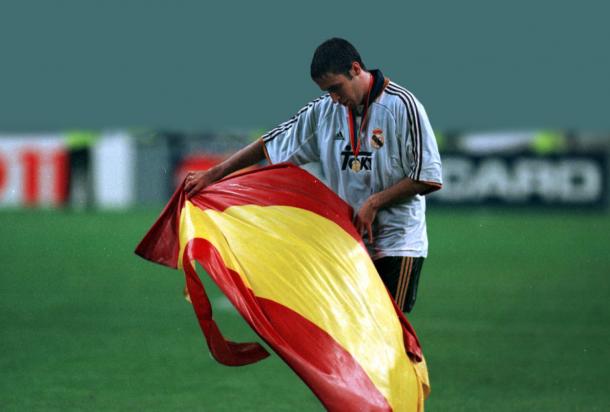
Zidane's volley
The 2001 Champions League final pitted Real Madrid against Bayer Leverkusen at Hampden Park, the same venue that saw Real Madrid win their fifth European Cup against another German team, Eintracht Frankfurt. Del Bosque's side went ahead in the first ten minutes through Raúl, but the Germans scored a few minutes later. At the end of the first half, it would be the final goal that would give Real Madrid their ninth European Cup, and it would take them twelve years to win it again. Solari saw Roberto Carlos running down the left flank, passed him a ball and he crossed to the edge of the box, where Zidane was all alone. Zidane stuck out his right foot, bent his body and, with his left foot, fired the ball into the top right-hand corner of Butt's goal. This is one of the most memorable goals in the history of the competition, which meant a third Champions League in five years (1997, 1999 and 2001).
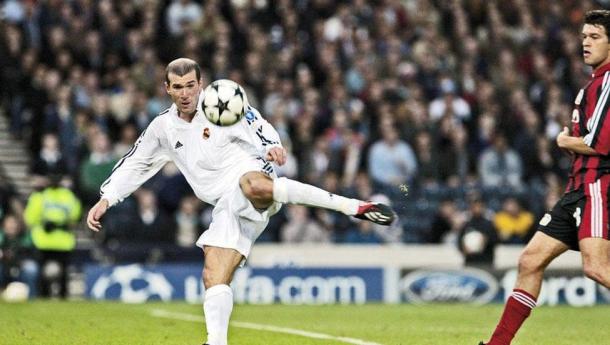
The galacticos
It was then that FIFA awarded Real Madrid the trophy for the best club of the 20th century. Florentino Pérez became president after promising to sign Luís Figo from Fútbol Club Barcelona. The "Madrid of the Galacticos" period began, with the signings of Ronaldo Nazário, David Bechkam and Zinedine Zidane. In 2002, the year of the club's centenary, two La Liga titles were won, and after the top-level squad that Real Madrid had, there followed a period of transition, where in eighteen months up to four coaches succeeded each other. It was three years without titles until José Mourinho arrived at the club.
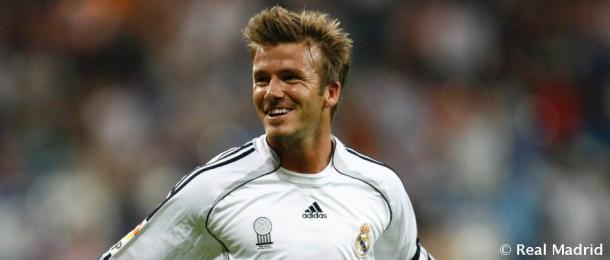
Cristiano Ronaldo's arrival
2009 was a disappointing year for Real Madrid because, despite Florentino Pérez returning to the club with several star signings, Manuel Pellegrini's Real Madrid failed to win any trophies. It was then that Karim Benzema, Ricardo Kaká, Xabi Alonso and Cristiano Ronaldo arrived at the club. The following year, José Mourinho was hired, having just won the UEFA Champions League with Inter Milan against FC Barcelona at the Santiago Bernabéu Stadium. The style of play changed and we saw a counter-attacking Real Madrid, who were not rewarded at first, but gradually imposed themselves. They lost their first games against Fútbol Club Barcelona, and not just by any means, because in the first Mourinho-Guardiola derby, Barcelona were beaten five-nil, which proved to be very difficult. That season, the two clubs also met in the semi-finals of the UEFA Champions League, with the Catalans once again beating Madrid in a game full of controversy. Mou's men got their revenge in the Copa del Rey final, with Cristiano Ronaldo scoring the only goal of the game to win the tournament twenty years later.
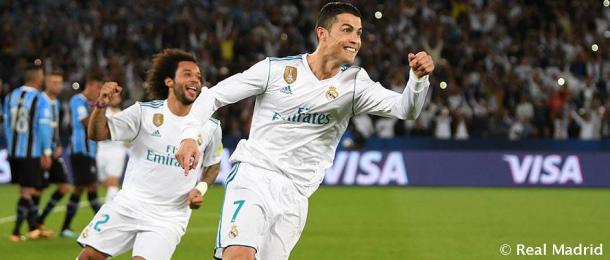
"The league of records
In the 2011/2012 season, Real Madrid had a memorable tournament, winning the La Liga title by reaching 100 points. They did so after four years without winning it, and irregularity in the regular La Liga championship would remain a constant to this day. He failed to win the Spanish Super Cup against Barcelona again, and a brawl broke out in which José Mourinho was seen poking Tito Villanova in the eye. In José Mourinho's last season at the club, the club won the Spanish Super Cup against Barcelona, although they lost the Copa del Rey to an Atlético Madrid side that was beginning its progression to the top of the European scene.

The conquest of "la décima".
It was Carlo Ancelotti who took charge of Real Madrid, who despite winning three titles in three years, managed to stand up to the best Barça team in history. The 2013/2014 season will be remembered for being the year in which Real Madrid managed to win the coveted tenth European Cup, after winning the last one twelve years earlier. What's more, the manner in which it was achieved added merit to the victory against Atlético de Madrid, who were ahead on the scoreboard and it wasn't until the last minute of the game that Real Madrid managed to equalize. It was from a corner kick taken by Luka Modric. Real Madrid had no option but to score from the corner, and the ball from the Croatian's right foot found the head of Sergio Ramos, who made a perfect parabola to send it into the back of the net. With that goal, the madness set in and Atlético Madrid collapsed, while Los Blancos experienced a surge due to the team's turnaround. In extra time, goals from Gareth Bale, Marcelo and Cristiano Ronaldo, from the penalty spot, gave the Estadio da Luz in Lisbon a memorable four-one victory.
Carlo Ancelotti also won the Copa del Rey against FC Barcelona, with the second goal giving Los Blancos victory after a Gareth Bale move that will never be forgotten. He also added a European Super Cup and a Club World Cup to his trophy collection.
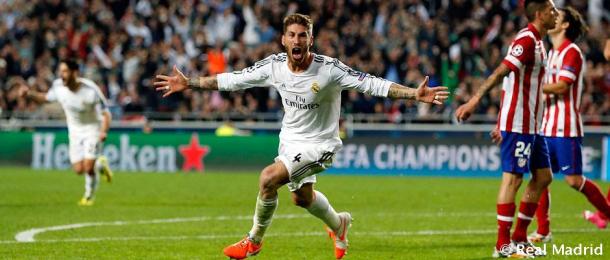
The Zidane era
Zinedine Zidane was then chosen as first-team coach, and what he didn't know was that he would become the coach of four Champions League titles with Madrid. In his first year, he arrived with the season already underway, having replaced Rafa Benítez, who didn't have the support of the management or the players. It only took a few months for Zidane to establish himself as the club's ideal manager, and he reaffirmed his status by winning his first title, the 2016 UEFA Champions League, against Atlético Madrid in Milan. The game ended in a draw and, after half an hour of extra time in which the match couldn't be resolved, it went to penalties, where Real Madrid beat their Manzanares neighbors for the second time in a Champions League final. Cristiano Ronaldo scored the penalty that clinched the title, which would have meant an eleventh Champions League for the club.
The team that won four European Cups in five years
In the French coach's second season in charge, he achieved a historic double in La Liga and the Champions League. In addition, Real Madrid became the first team in history to win two Champions Leagues in a row after the change of format, having already done so in the old one in the 1950s. But Real Madrid wanted more and ended up winning two more European Cups in a row, with Zidane winning three. He joined the select group of personalities who have won the Champions League as both a player and a coach. Juventus and Liverpool were the ones who lost in the finals to an unbeatable Real Madrid. But winning the "thirteenth" Champions League would be the beginning of the end for a squad that had become monotonous. At the end of the Kiev final against Liverpool, Cristiano Ronaldo dropped a bombshell in which he declared that "it had been good to play for Real Madrid", and in the summer of that year his departure from the club to Juventus for just over 100 million euros was made official, leaving Real Madrid after nine years at the club. In addition, the Portuguese remains the club's all-time top scorer, ahead of Raúl González and Alfredo Di Stéfano.
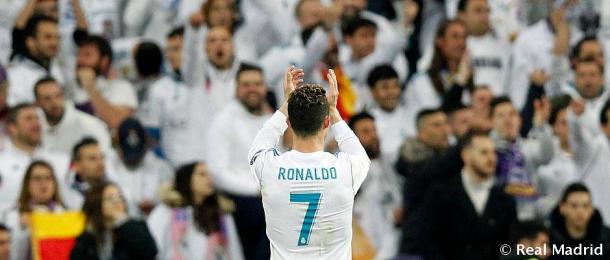
A blank year
Following Cristiano Ronaldo's departure, it was also surprisingly announced that Zinedine Zidane was stepping down as the club's coach, thus ending a successful period. Nevertheless, less than a year later, he returned after the failure of Julen Lopetegui and Santiago Solari. Zinedine Zidane then returned to a Real Madrid in reconstruction, where goals were scarce after the departure of Cristiano Ronaldo and where the young Brazilian star Vinicius Jr. was emerging. In the 2019/2020 season, Belgian star Eden Hazard arrived at the club, along with players such as Luka Jovic, Ferland Mendy and Éder Militão.
"The Vikings".
Real Madrid is known by many names, but the nickname Vikings is the most special for the club. Its connection to the club is due to the fact that, after beating Eintracht Frankfurt in the 1959/1960 European Cup Winners' Cup final by seven goals to three, the prestigious newspaper The Times published the following day the following headline: "This final is considered the best in the history of the tournament, not only because of the result, but also because of the remarkable superiority of Di Stéfano's Madrid".
Biography of Jorge Cascón Guerra

